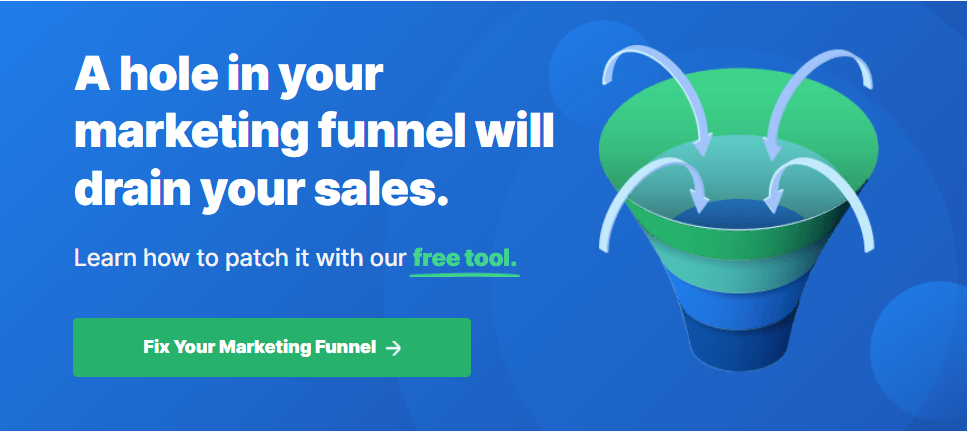-
 Published: May 20, 2023
Published: May 20, 2023
-
 19 min. read
19 min. read
-
 Sina Mchunu
Sina Mchunu Research & Tech Content Writer
Research & Tech Content Writer
- Sina is a marketing expert who specializes in SEO, AI, and digital marketing content. With over five years of experience, she’s written hundreds of pieces, spanning a variety of topics and industry niches. She loves combining her strong eye for detail and passion for storytelling in her work. You’ll find her fruit picking or horse riding at the local farm when she’s not writing.
Sales pipeline definition: A sales pipeline is a graphical representation of a prospect’s stages before purchasing a product or a service. It helps sales teams track their progress, pinpoint revenue-killing roadblocks, and prioritize their efforts to increase revenue.
Are you using a sales pipeline for your business? If you answer no, you’re missing out on potential revenue and growth opportunities. A sales pipeline can help you track your leads, prioritize your initiatives, and improve your overall sales performance.
In addition to helping with revenue projections and strategy tweaks, it can also shed light on the customer journey and help your team better serve them at every stage.
Your company’s customer acquisition and retention efforts will be more coordinated and successful if your sales and other departments can better communicate with one another through a well-designed sales funnel.
By analyzing the pipeline, your sales team can prioritize prospects and focus on those most likely to convert into paying customers.
In this article, we’ll discuss the key elements of a successful sales pipeline and offer valuable insights and practical tips on creating your sales pipeline and closing more deals effectively.
Here’s a summary of the topics we’ll cover:
- What is a sales pipeline?
- Why do you need a sales pipeline for your business?
- Key elements of a sales pipeline
- Primary stages of a sales pipeline
- How to create a sales pipeline to boost closing rates
Learn the solutions for the five most common sales pipeline challenges!
Don’t miss our Marketing Manager Insider emails!
Join 200,000 smart marketers and get the month’s hottest marketing news and insights delivered straight to your inbox!
Enter your email below:
Inline Subscription Form – CTA 72
“*” indicates required fields
(Don’t worry, we’ll never share your information!)
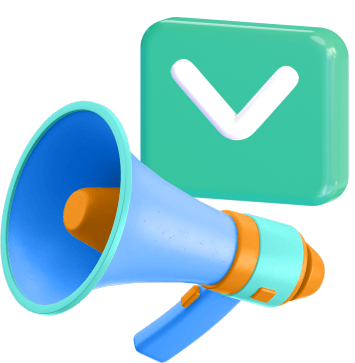
What is a sales pipeline?
A sales pipeline is a series of stages prospects go through as they become clients. It involves various elements, such as lead generation, lead scoring, communication sequences, and closing deals.
Why do you need a sales pipeline for your business?
A sales pipeline is essential because it provides you with a complete picture of your sales procedure, enables you to identify potential obstacles, and improves the accuracy of your revenue forecasts.
It also lets you track customer interactions and prioritize leads, increasing efficiency and enhancing customer relationships. Having a sales pipeline to monitor leads’ progress through the buying cycle is crucial for any business owner.
If you own a small online boutique, for instance, a sales pipeline will let you know which prospects are browsing and which are ready to purchase. This knowledge could lead to more sales opportunities and potentially reduce revenue loss.
A sales pipeline can help you identify which sales process stages need improvement. If a significant fraction of leads is disappearing from the pipeline at a particular stage, for instance, you can examine the reasons for this and make changes to the pipeline’s design to reduce the proportion of lost leads at that stage.
This could include offering more information or resources to prospects at that stage or addressing common objections.
By analyzing data from your pipeline, you can identify trends and patterns in your sales process, such as peak buying seasons or popular products. You can use this information to create more accurate sales projections and make informed inventory and marketing strategy decisions.
A hole in your marketing funnel will drain your sales.
Learn how to patch it with our free tool.
Fix Your Marketing Funnel
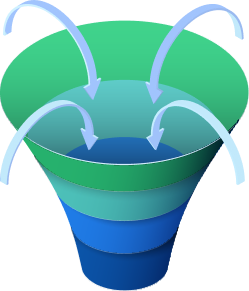
Key elements of a sales pipeline
Understanding the key elements of a sales pipeline is vital if you are setting up an efficient and profitable system to drive revenue growth.
Here are some of the most crucial elements to consider:
- Lead scoring
- Lead nurturing
- Sales process optimization
- Sales pipeline management
- Sales pipeline metrics and analysis
Let’s explore these in more detail.
Lead scoring
Lead scoring involves assigning points to each lead based on their level of interest, budget, and purchasing authority. It helps sales teams zero in on the most promising leads, saving time and effort while increasing conversion rates.

Lead scoring is key in the sales pipeline because it allows your sales team to allocate resources wisely and close deals faster by identifying the leads most likely to become clients.
By using lead scoring, your team can also personalize their approach and tailor their messaging to each lead’s specific needs and interests, further improving their chances of success.
Lead nurturing
Lead nurturing strategies build relationships with prospects and keep them engaged with your brand, ultimately increasing the likelihood of a sale.
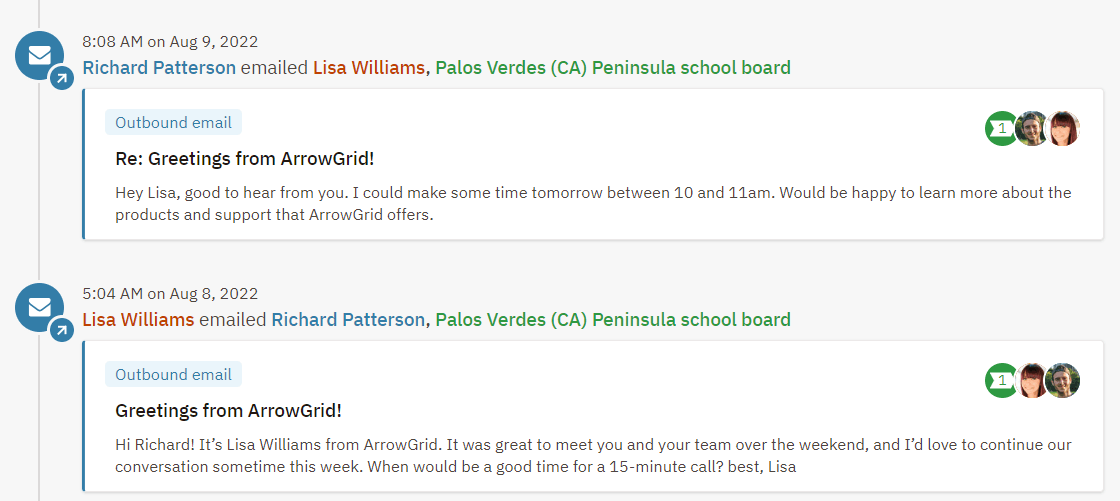
By providing valuable content and personalized communication, lead nurturing can help move prospects through the sales pipeline and turn them into loyal customers.
Lead nurturing can take many forms, including social media interactions, email marketing campaigns, and personalized follow-up calls. Its goal is to provide prospects with relevant and valuable information that addresses their pain points and needs while establishing your company as a trusted authority in your industry.
Increasing brand awareness, favorability, and eventual purchase intent depends on your ability to spread as many positive messages as possible to your target audience.
Sales process optimization
Sales process optimization streamlines the sales pipeline, reduces costs, and increases revenue. By analyzing and improving each step of the sales process, you can identify areas of inefficiency and implement solutions to improve overall performance.
Optimizing a pipeline means finding its weak spots, such as excessive waiting times or high churn rates, and fixing them. To decrease the strain on your sales force and guarantee that leads receive timely and appropriate contact, you can choose to automate key portions of the sales process, such as lead scoring or follow-up emails.
You can also invest in sales training and coaching programs to help your team better understand your target audience‘s requirements and pain points and improve their overall sales skills.
Ultimately, sales process optimization is about creating a more efficient, effective sales pipeline.
Sales pipeline management
Sales pipeline management allows your sales team to track and manage their sales opportunities effectively, from initial contact to closing the deal. It enables them to prioritize their efforts and focus on the most promising leads, increasing sales and revenue.
A critical aspect of sales pipeline management is tracking key performance indicators (KPIs) to measure the success of the sales process. These KPIs can include conversion rates, average deal size, and sales cycle length.
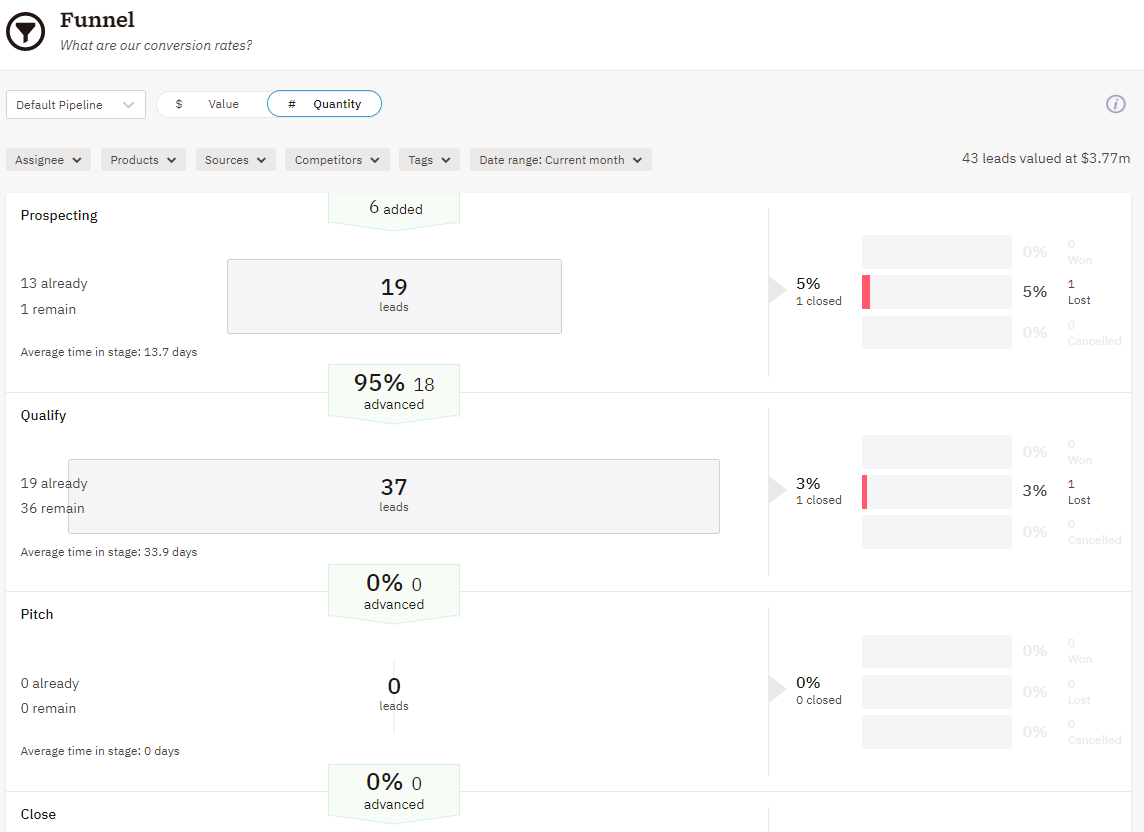
By regularly monitoring these KPIs, you can evaluate your sales tactics and make any necessary changes. Effective pipeline management involves collaboration between sales and marketing teams to ensure that your marketing team properly qualifies and nurtures leads before they reach the sales team.
Streamlining your sales process and boosting your team’s productivity are both possible with the help of a well-structured sales pipeline management system.
Sales pipeline metrics and analysis
Sales pipeline metrics and analysis allow your team to track their sales activities’ progress and identify improvement areas, ultimately leading to more efficient and effective sales processes.
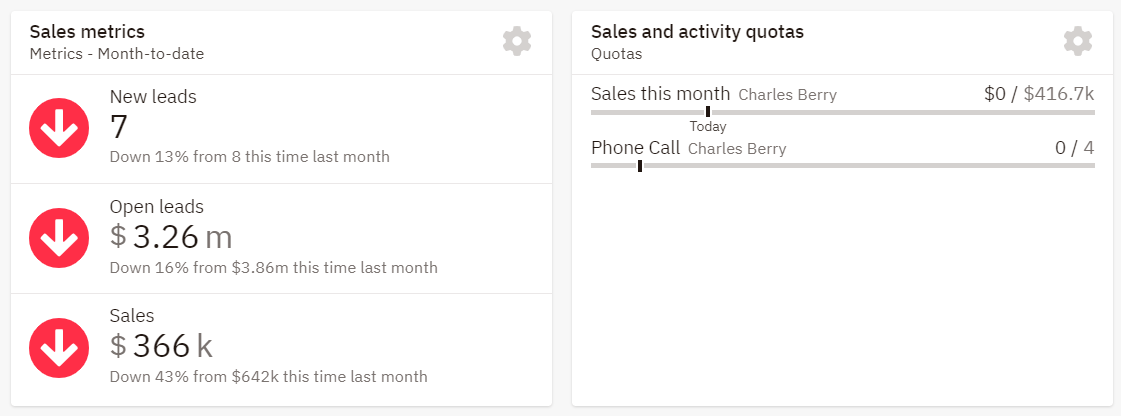
Customers’ preferences and routines can be better understood through pipeline metrics and analysis, allowing you to provide for their needs more effectively.
Some standard sales pipeline metrics you can track include the following:
- Lead velocity rate measures the rate at which new leads enter the pipeline.
- Win rate measures the percentage of won versus lost deals.
- Pipeline coverage measures the pipeline you need to achieve a sales target.
By analyzing these metrics, sales teams can determine where to center their initiatives to improve performance and increase revenue. It’s essential to regularly review and adjust these metrics as necessary to ensure that your sales pipeline is optimized for success.
Measuring the metrics that affect your bottom line.
Are you interested in custom reporting that is specific to your unique business needs? Powered by MarketingCloudFX, WebFX creates custom reports based on the metrics that matter most to your company.
- Leads
- Transactions
- Calls
- Revenue

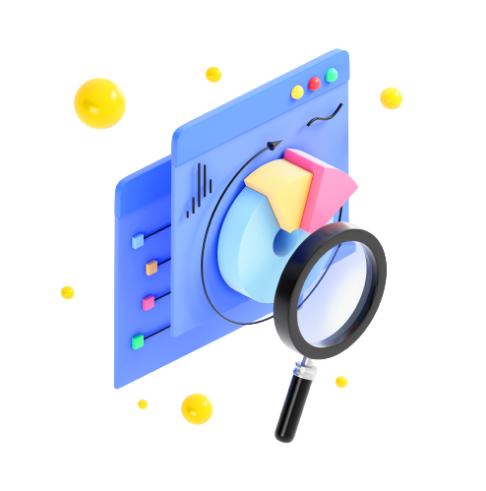
Primary stages of a sales pipeline
The purpose of a sales pipeline is to guide leads through each stage of the sales process to convert them into paying customers.
Every company has its own sales pipeline, but the primary stages typically include the following:
Each stage requires specific actions and strategies to move the prospect through the pipeline toward a successful sale. Read on to learn more about each.
Lead generation
In reality, you can only sustain a sales pipeline with a steady stream of leads. That’s why lead generation is the most essential stage of the sales pipeline.
Lead generation involves identifying prospects interested in your product or service. Marketing via word of mouth, advertising, and personal connections are all viable options for this purpose.
Your team can generate leads for the sales pipeline by creating compelling content that attracts your company’s target audience. This content could be blog posts, social media updates, or webinars.
A software company’s sales manager, for instance, could publish a white paper affirming the benefits of cloud computing for new businesses. You can then promote the white paper through online paid advertising and social media posts, attracting leads interested in learning more about cloud computing.
As these leads engage with your content and express interest in the software company’s solutions, they move further through the sales pipeline toward a potential sale.
You can capture prospects’ attention and build relationships by offering valuable information or insights. Another effective strategy is to use lead magnets, such as free e-books, checklists, or templates, to entice prospects to provide their contact information.
The key is providing value at every touchpoint and tailoring your approach to each lead’s needs and interests. With a well-crafted lead generation strategy, you can fill your sales pipeline with qualified prospects and increase your chances of closing more deals.
Lead qualification
The next step after generating leads is qualifying them to determine if they are a great fit for your offerings and how serious they are about purchasing. This stage involves gathering information about their needs, budget, and decision-making process.
Once you have this info, you can prioritize your efforts and focus on the leads most likely to convert into paying customers. One effective way to qualify leads is through lead scoring, which gives each lead a scoring rate according to data about their demographics and level of engagement.
If you’re selling software to other businesses, you might give more weight to a lead who works in IT at a major corporation and has shown interest in your product by attending a webinar or downloading a whitepaper.
On the other hand, a lead who works in an unrelated industry and has only visited your website once may be less valuable, so you can assign them a lower value. By prioritizing your efforts on the most qualified leads, you can maximize your resources and increase your chances of closing deals.
Your team can prioritize their efforts and concentrate on prospects likely to become paying customers by assessing the information about their needs, budget, and decision-making process. This approach aids in filling the sales pipeline with qualified prospects and increasing the conversion rate.
Marketing automation software allows you to streamline operations, prioritize high-quality leads, and close deals faster. With a strong lead generation and qualification process, you can streamline your sales efforts and increase revenue growth.
Needs assessment
Once you’ve qualified your leads, you can perform a needs assessment to determine your prospects’ specific pain points and challenges. This assessment will help you tailor your sales pitch and offer solutions that address their unique needs.
It’s important to ask open-ended questions and actively listen to the prospect’s responses during the needs assessment. Learning more about the lead’s background will help you cater your approach to their wants and needs.
Returning to the above example of your hypothetical B2B software company — your team may use a needs assessment to identify that their prospect is struggling with manual data entry, leading to errors and delays in their workflow.
Then, they can tailor their sales pitch to highlight the efficiency benefits of your company’s automation software, addressing the prospect’s specific pain point and increasing the likelihood of closing the deal.
You can build trust and establish a stronger relationship by demonstrating that you understand your prospects’ needs and concerns. Ultimately, the needs assessment is a critical step in the sales process that can give you a competitive edge and win more business.
Proposal and presentation
Once you know your prospects’ needs and requirements, it’s time to create a proposal that addresses their specific pain points and offers a solution. Your proposal should be clear, concise, and tailored to the prospect’s business. It should also highlight the benefits of your product or service and explain how it can solve their problems.
If your B2B software company is pitching to a manufacturing company struggling with quality control, your proposal could highlight how your software can automate quality checks and reduce errors in the production process. You could also include case studies or testimonials from other manufacturing clients who have seen success with your product.
Remember that the prospect probably weighs several options when you craft your proposal. That’s why it’s crucial that you set yourself out from the competition and provide them with a solid reason to pick your business.
That’s where your presentation skills come into play. You’ll need an engaging, well-designed presentation to effectively showcase your offering and win over potential clients.
In addition to highlighting the benefits of your offering, addressing any concerns or objections the prospect may have is essential. You could address pricing concerns or explain how your software integrates with their existing systems.
You can increase your chances of converting by tailoring your proposal to the prospect’s specific needs, providing a compelling reason to choose your company, and following up with the lead.
Closing the deal
The ultimate goal of the sales pipeline is to close deals with qualified prospects by addressing any objections they may have and convincing them that your product or service is the best solution for their needs.
To achieve this, it’s essential to understand the prospect’s decision-making process and timeline clearly. Are they looking to decide quickly, or do they have a more extended evaluation period? Having this understanding can allow you to tailor your approach and follow-up strategy.
Establishing a sense of urgency is essential without appearing pushy or desperate. Offering time-sensitive discounts and specials can be a successful strategy, but only if they are positioned as value-additions rather than price cuts.
The ability to convert leads into loyal clients willing to pay the total price for your product or service in the future depends on the quality of your sales pipeline and your ability to close the deal. Building long-term relationships is essential rather than just making a quick sale.
37% of marketers say that generating high-quality leads was one of their biggest challenges.
We want to decrease that percentage.
WebFX can help you generate high-quality leads with a customized marketing strategy.
Learn More About Lead Generation Services

How to create a sales pipeline that boosts closing rates
Now that you understand the components of a sales pipeline, you can begin building one that will boost your conversion rates.
Here are a few steps to take when creating a sales pipeline for your business:
- Define your ideal customer
- Identify key stages in the buying process
- Develop lead generation strategies
- Implement a customer relationship management (CRM) system
- Analyze and optimize your sales process
1. Define your ideal customer
The best way to build a successful sales pipeline is to first identify the ideal clients you intend to pursue. Doing so will ensure that your efforts focus on leads with a greater chance of converting.
Start by identifying the characteristics of the customers most likely to benefit from your offerings and purchase. You can consider factors like demographics, psychographics, and behaviors.
Your target market for high-end athletic gear may be adults between 18 and 35 who lead active lives, place a premium on quality and performance, and are open to spending more money on these factors.
You can then use this data to tailor marketing messaging and target specific audiences through various channels.
Once you have a thorough ideal customer profile, you can tailor your marketing and sales efforts to target them more effectively. It will improve the quality of your leads and boost your ability to close business.
2. Identify key stages in the buying process
Once you know your ideal customer, you must map their journey from initial interest to purchase. One strategy is to name the distinct phases that make up the purchase decision. These include:
- Awareness: Here, the buyer becomes aware of a problem or need that requires a solution. This is where the buyer begins to research and gather information about potential solutions.
- Consideration: During this stage, the buyer will likely evaluate different options and compare them based on features, benefits, and pricing. They may also seek recommendations from colleagues or read reviews to make an informed decision.
- Decision-making: During this stage in the sales process, potential customers evaluate the options available to them and decide whether or not to make a purchase.
- Post-purchase evaluation: This is the final stage in the sales process. Some customers may choose to forego specific options, which makes their experience with your company more personalized.
Understanding these key stages will allow you to identify potential roadblocks and create targeted marketing campaigns and sales strategies that address each customer journey stage.
For example, you might use social media ads to increase product awareness, email campaigns to nurture leads during consideration, and personalized sales pitches to close deals during decision-making.
By mapping out the buying process and tailoring your approach accordingly, you can increase your chances of converting leads into loyal customers.
Each customer’s journey is unique, and some customers may choose to skip steps in the process. That’s why it’s crucial to gather feedback and adjust your strategies accordingly continuously.
You can boost the percentage of five-star reviews and recommendations from satisfied customers after they’ve made a purchase if you provide outstanding service and always follow through on your promises.
To foster lasting connections with your customers and propel your company forward, you must master their journey.
3. Develop lead generation strategies
Effective lead generation is the foundation of any successful sales pipeline. It involves identifying and targeting prospects likely interested in your product or service and engaging with them to encourage them to take action and become customers.
Some ways you can engage your audience to turn them into leads include the following:
- Creating targeted marketing campaigns involves tailoring your messaging and content to specific audience segments based on their interests, behaviors, and demographics. You can use tools like personalized landing pages, email marketing, and social media advertising to reach these targeted groups.
- Optimizing your website for search engines involves meta descriptions, keywords, and other techniques to ensure the website is more visible to people searching for relevant topics. Combining these strategies allows you to develop a comprehensive digital marketing plan that effectively reaches your target audience and drives conversions.
- Leveraging social media platforms: You can effectively leverage these platforms to drive conversions and increase return on investment (ROI) by utilizing paid advertising, influencer partnerships, and engaging content.
It’s essential to clearly understand your target market, their pain points, and the channels they use to consume information and make purchasing decisions.
By aligning your lead generation efforts with your customer journey map, you can create a seamless experience for your potential customers and potentially convert them into loyal customers.
4. Implement a customer relationship management (CRM) system
A CRM system is essential for managing customer interactions and tracking leads as they move through the sales pipeline. In addition, it can show you where your sales team could use some coaching or extra resources.
You can better direct your marketing efforts by learning more about your customer’s habits and preferences through the CRM system. Automating and streamlining processes and communication between your CRM and digital marketing tools allows your team to focus on building relationships with customers and moving them along the sales pipeline.
For example, your hypothetical B2B software company could use LinkedIn to target decision-makers in your industry and offer a free trial of your product. You could also work with industry influencers to promote your company’s offerings and create engaging content that addresses your target market’s pain points.
Using a CRM system, you could track leads from initial contact to conversion, identify areas for improvement in the sales process, and personalize marketing efforts based on customer behavior.
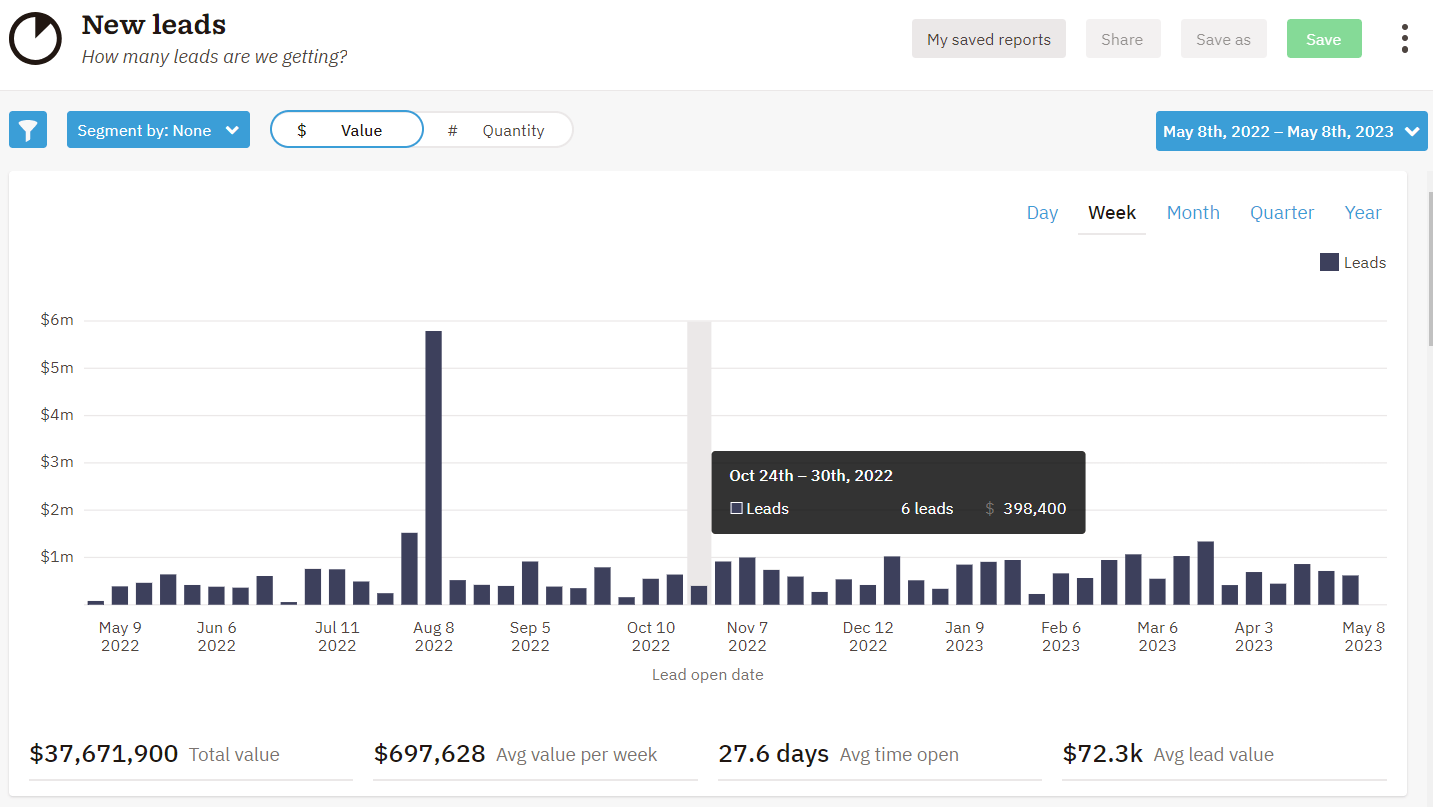
A CRM system like Nutshell can track your marketing campaign’s success and make data-driven decisions to optimize your strategy. Implementing it is crucial in creating a comprehensive digital marketing plan that drives conversions and fosters long-term customer loyalty.
5. Analyze and optimize your sales process
Once you understand your ideal customer, their buying journey, and effective lead generation strategies, you must continually analyze and optimize your sales process.
This means tracking metrics like conversion rates and identifying areas for improvement, such as streamlining your sales pitch or improving your follow-up process.
By continuously refining your approach, you can maximize your chances of converting prospects into clients and driving revenue for your business. In addition to analyzing your sales process, it’s also essential to prioritize customer satisfaction and retention.
You can achieve this by implementing strategies such as personalized communication, offering exceptional customer service, and creating loyalty programs.
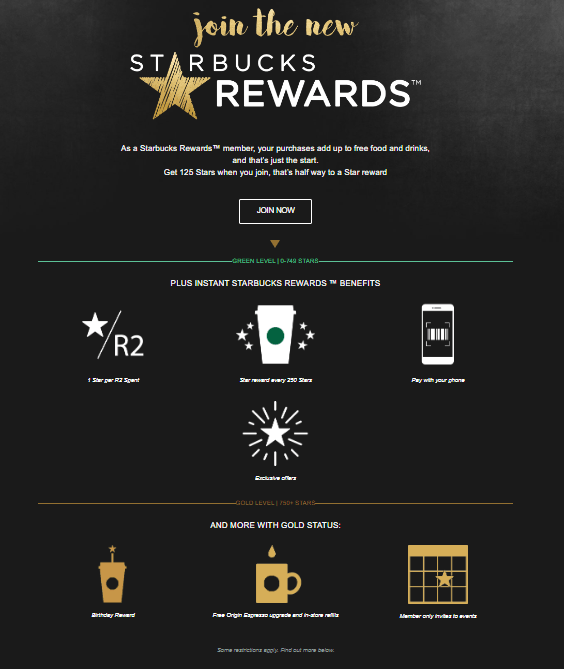
By prioritizing the satisfaction of customers, businesses may raise their customers’ lifetime value and provide the groundwork for long-term success. Adopting cutting-edge practices and staying abreast of market shifts may also provide a competitive edge for your business.
You can thrive in today’s competitive market with the help of a thorough sales funnel and a dedication to constant improvement. To keep up with the changing demands of your consumers and your sector, it is essential to assess and change your tactics continually.
Time to Level Up Your Sales
Our long list of services helps you grow every aspect of your business with marketing strategies that are proven to increase bottom-line metrics like revenue and conversions.
In the past 5 years, we’ve managed more than 14.9 MILLION transactions across our client base.
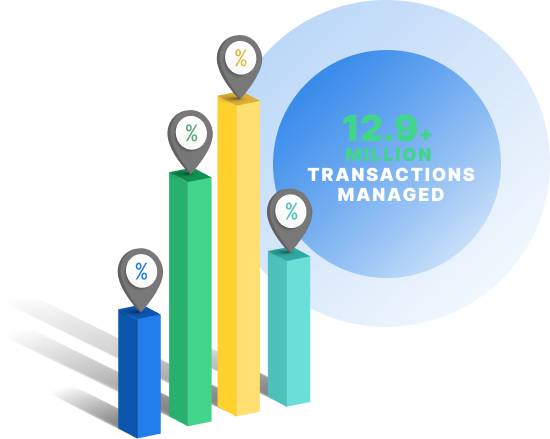
Get prospects into your sales pipeline with WebFX
At WebFX, we have a team of experts who will work with your team to identify and attract prospects, nurture those leads with targeted content and personalized communication, and ultimately convert them into paying clients.
Streamline your sales process and increase your ROI with our all-inclusive approach to lead generation. We offer the resources and knowledge to assist your company, no matter its size, in reaching its sales objectives and expanding its operations.
So far, we’ve generated over 24 million leads for our clients and look forward to doing the same work for you. Together, you and our skilled professionals will create a unique plan that is tailored to your specific needs and gets results for your company.
Contact us online or call 888-601-5359 to learn more about our lead generation services and how we can help you take your sales to the next level.
-
 Sina is a marketing expert who specializes in SEO, AI, and digital marketing content. With over five years of experience, she’s written hundreds of pieces, spanning a variety of topics and industry niches. She loves combining her strong eye for detail and passion for storytelling in her work. You’ll find her fruit picking or horse riding at the local farm when she’s not writing.
Sina is a marketing expert who specializes in SEO, AI, and digital marketing content. With over five years of experience, she’s written hundreds of pieces, spanning a variety of topics and industry niches. She loves combining her strong eye for detail and passion for storytelling in her work. You’ll find her fruit picking or horse riding at the local farm when she’s not writing. -

WebFX is a full-service marketing agency with 1,100+ client reviews and a 4.9-star rating on Clutch! Find out how our expert team and revenue-accelerating tech can drive results for you! Learn more
Try our free Marketing Calculator
Craft a tailored online marketing strategy! Utilize our free Internet marketing calculator for a custom plan based on your location, reach, timeframe, and budget.
Plan Your Marketing Budget
Table of Contents
- What is a Sales Pipeline?
- Why Do You Need a Sales Pipeline for Your Business?
- Key Elements of a Sales Pipeline
- Lead Scoring
- Lead Nurturing
- Sales Process Optimization
- Sales Pipeline Management
- Sales Pipeline Metrics and Analysis
- Primary Stages of a Sales Pipeline
- Lead Generation
- Lead Qualification
- Needs Assessment
- Proposal and Presentation
- Closing the Deal
- How to Create a Sales Pipeline That Boosts Closing Rates
- 1. Define Your Ideal Customer
- 2. Identify Key Stages in the Buying Process
- 3. Develop Lead Generation Strategies
- 4. Implement a Customer Relationship Management (CRM) System
- 5. Analyze and Optimize Your Sales Process
- Get Prospects into Your Sales Pipeline with WebFX

Maximize Your Marketing ROI
Claim your free eBook packed with proven strategies to boost your marketing efforts.
Get the GuideTry our free Marketing Calculator
Craft a tailored online marketing strategy! Utilize our free Internet marketing calculator for a custom plan based on your location, reach, timeframe, and budget.
Plan Your Marketing Budget

